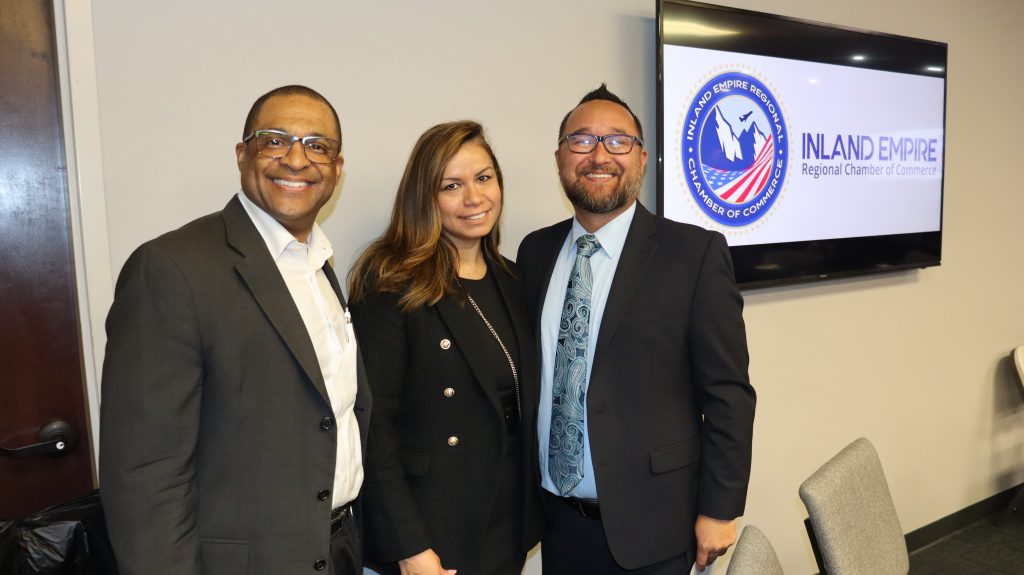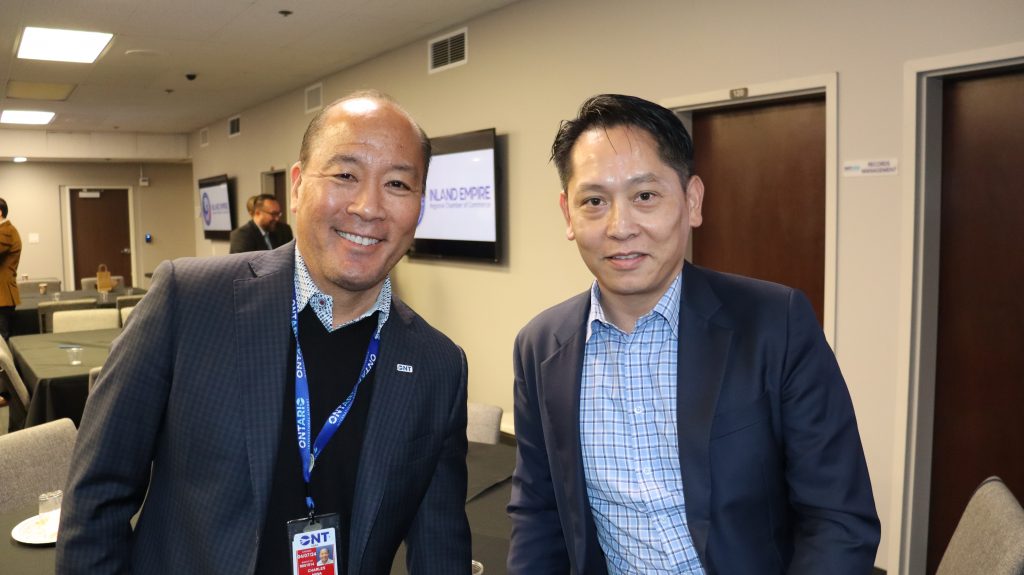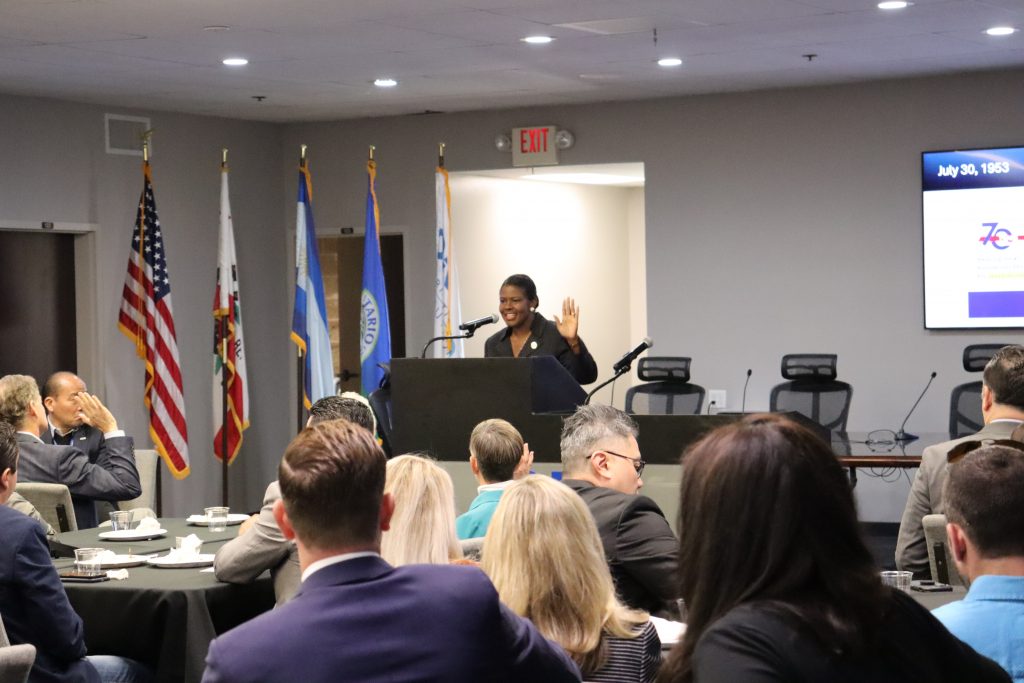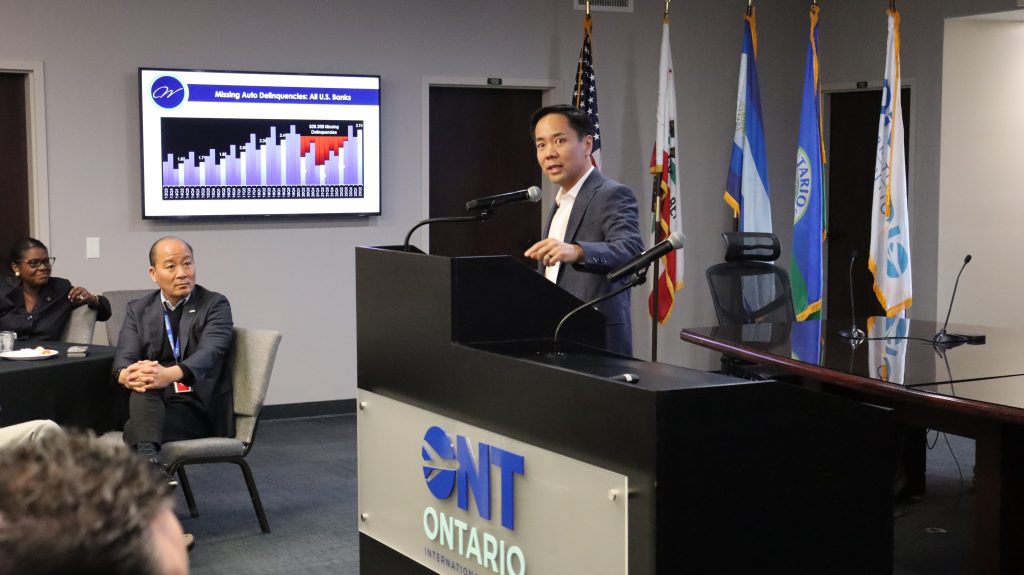Banking & Financial Services
Q&A Session with Black Cooperative Investment Fund Executive Director—Kaine Nicholas

Q&A with Kaine Nicholas, Executive Director of Black Cooperative Investment Fund
By Josaline Cuesta, Small Business Majority, Senior California Program Manager, and IEBJ Contributor
Why is financial literacy important for small business owners? What are the pillars of financial literacy?
Financial literacy is the comfort level one may have with topics related to money and its management. Financial literacy is critical to success, and it’s where everything begins for small business owners.
At the beginning of a business venture, an entrepreneur can be cash-challenged and relatively inexperienced in practical business versus theory. It is important that while learning the business terrain, entrepreneurs have at the very least, a baseline of financial literacy to question documents and do calculations or have support to negotiate effective business terms. Any terms that are negotiated at the beginning of a venture can significantly affect the projections or the valuation of a business. These effects can vary widely, depending on the comfort level of financial literacy.
The pillars of financial literacy are banking, budgeting, saving, credit, debt, and investing. What matters most to small business owners is budgeting, banking, and credit, and we recommend focusing on that order for small business owners. Understanding the numbers, having the assets with banking partners that can offer solutions, and building business and personal credit are all imperative to small business owners. BCIF and its trusted partner, AmPac Business Capital can help everyone gain a firm awareness of these pillars.
What’s needed to create a strong financial plan?
What is needed to make a strong financial plan is the actions that happen alongside writing the actual financial plan. While one may be uncertain of the “hockey stick” or optimistic revenue, what people can control is the cost. Know those costs and how they change in a good, better, or best scenario to keep you prepared.
No one likes surprises. There is security and comfort in knowing that costs are consistent and predictable. Spend time conducting the research and use due diligence so that you and the financial partners understand the financial plan and financial statements.
What’s in a business plan, and why is having one essential for a small business owner?
A business plan is a document that, at its most basic level, can help small business owners navigate the who, what, where, why, and how to generate income with a product or service. The business plan tells the reader that this “document” is your prototype on paper. The business plan also helps readers understand the basic valuation of your business.
If your business plan is on paper, does it articulate the vision, or is it a requirement for a loan program? The business plan is important because it represents as the creator of the business. Thinking business out on paper can reduce mistakes in real-world execution.
What’s the best way to document and share major changes to a business plan with your financial advisor and employees, such as becoming a corporation or expanding to another state?
Ensure the establishment of company meetings and hold them routinely, preferably with quarterly updates. This allows stakeholders to receive firm-wide public information and establishes communication between leadership, management, and employees.
What are some tips for thinking strategically about cash flow?
One tip is to understand what is in the pipeline and/or accounts receivables and monitor subscriber trends to your products or solutions. When I ask business owners how their business is doing, they usually respond with, “it’s going well.” And I always ask myself, what does that really mean, and is the owner aware of the items that support healthy cash flow?
Is a personal credit score relevant to small business success? What defines a “good credit score” and how can you maintain one?
Personal credit is relevant to businesses at the earlier stages of a business. If used correctly, one should leverage good credit and create business credit as soon as possible. Personal credit and business credit are created differently and operate differently. That difference can be critical to accessing capital. Unfortunately, a “good credit score” is not universal. We recommend owners investigate the potential creditor by asking what numerical score and credit history on the credit report will produce a favorable outcome. A credit score and credit report are two components that contribute to a sizable credit decision. With that information, the small business owners have a credit “road map.” What is most important is that the business owner is proactive in the credit conversation. One can maintain and learn more with one of BCIF’s trusted partners, AmPac Business Capital.
What are the top three easy-to-navigate business loans for a startup business? Do the types of loans that are needed change in your 2nd or 3rd year of business?
The top and the easiest loan is a zero-interest loan based on an alternative way of evaluating personal credit and traditional risk models. If one can find a small business loan that targets a certain demographic or type of business, that should be extremely helpful. Third, look for a small business loan that can be forgiven.
The types of loans that could change in your second or third year of business can be tricky. Business success and loan/funding gaps require careful consideration, but most important, predictability.
How will I know that a financial literacy resource is proven and credible?
Financial literacy is a journey. One way to affirm credibility is to compare it to your financial situation. Always have a backup resource for validation.
How can the average entrepreneur improve their financial literacy?
This is an important and critical question that I will answer in an alternative, more direct way. I strongly recommend these three words as ways to improve personal and business financial literacy:
- Curiosity
- Humility
- Discipline
Start with opening your mail and being curious about the words that you do not understand in your statements. Call the service number and ask the person to explain what these words mean regarding your account. It sounds simple, but it truly is a free lesson that benefits your personal or professional situation. The information is memorable because the asker is learning even when configuring the question. (Do not forget your tax person or accountant. They are your resources).
Humility helps your behavior when you ask a question, and you partially know the answer, but you ask questions to attain mastery.
Lastly, you must be disciplined and determined when you call the service line or account representative when you do not fully understand a financial term. Do not feel like you are wasting their time asking basic questions. If they have chosen to do business, service your needs, or hold your money, you are only using your mutual rights within the relationship.
What is the best way to stay abreast of COVID relief funds and resources in the Inland Empire area?
Contact the Black Cooperative Investment Fund (BCIF) at www.bcifund.org, 310-904-6336, reach out to our partner, AmPac Business Capital at www.ampac.com, or visit Venturize: https://venturize.org/—Small Business Majority’s free online resource hub for small business owners who need help accessing tools and resources to grow their businesses.
Banking & Financial Services
California’s Economic Horizon: Treasurer Ma’s Optimistic Forecast for the Inland Empire

State Treasurer Fiona Ma outlines key initiatives and predicts robust growth for the region, highlighting major projects and economic strategies
By Ken Alan, Freelance Writer for IEBJ
California State Treasurer Fiona Ma presented an optimistic economic forecast for the Inland Empire at the Mid-Year Banking & Financial Industry Outlook. “I spend a lot of my time traveling to all 58 counties to understand their economic development needs and match them with investors,” she explained.
Treasurer Ma highlighted her support for the Brightline West high-speed rail project, which secured $3 billion in funding from President Biden’s Bipartisan Infrastructure Bill and an additional $3.5 billion through private activity bonds (PABs). The 218-mile train, running through the median of Interstate 15, will have stations in Las Vegas, Victor Valley, Hesperia, and terminate in Rancho Cucamonga, where it will connect with the California High-Speed Rail.
While high-speed rail remains controversial due to its high construction costs, Ma argued that such systems are vital solutions to highway gridlock and the high cost of housing in major metro areas. With no significant highway projects in the planning stages, California legislators are considering electronic tolls to manage peak hour traffic. Additionally, the air travel industry continues to struggle with pilot shortages, high fuel costs, safety concerns, and customer service issues, which could be alleviated by increased competition. The persistent barriers to new housing—such as labor costs, high interest rates, and government red tape—also remain formidable.
The construction of the Brightline project is expected to take four years, aiming for completion in 2028 just in time for the Olympic Games in Los Angeles. Ma promised three years of high-paying construction jobs and mentioned plans for new affordable rental units and renovations to existing ones.
Treasurer Ma also referenced the Barstow International Gateway project (BIG) as another economic catalyst for the Inland Empire. Though not directly involved, she noted that the railroad company BNSF had purchased 4,000 acres on the west side of Barstow to develop a major transloading center for international freight from the ports of Los Angeles. This initiative is expected to significantly reduce truck traffic on Southern California freeways and boost San Bernardino County’s economy.
Treasurer Ma oversees a state budget of $3.7 trillion. During the first two years of the pandemic, California realized surpluses of $46 billion and $96 billion, respectively. However, in the third year, the state faced a $50 billion deficit due to layoffs in tech companies, declines in commercial leases, and reductions in individual and corporate tax revenue.
“Our state heavily relies on personal income tax, corporate tax, and sales taxes,” Ma added, noting that as of May, personal income taxes were up $1.4 billion over projections and corporate taxes had risen by $752 million.
Ma invited business leaders to explore the California State Treasurer’s website (www.treasurer.ca.gov) to learn more about state programs that support economic prosperity, including Cal Savers, the Scholarship 529, and CalABLE for disabled workers.
She is currently collaborating with a Blue Ribbon Commission to provide banking services to residents unable to afford traditional banking. Ma emphasized that California’s quality of life remains a competitive advantage over lower-tax states with laws she described as unfriendly to women, minorities, teachers, and doctors. She also noted the high interest from investors in the state.
The Mid-Year Outlook featured a panel discussion with industry leaders on the current and future states of finance. William Wang, MBA, a cash flow expert, encouraged business leaders to consider the opportunity costs against high interest rates, suggesting that a 5% rate change should not significantly impact businesses with a solid capital use strategy. Ursula Garrett, CPA, advised business owners to maintain accurate records to avoid audits and recommended consulting a CPA if contacted by the IRS. Krisante Gunewardena from RE/MAX Diamond Bar noted a recent reduction in lease rates, suggesting it’s an opportune time for office sector investments.
The event was hosted by the Inland Empire Regional Chamber of Commerce at Riverside City Hall’s Grier Pavilion on Thursday, June 6.
Banking & Financial Services
Rate Changes are Looming: Follow Long-Term Game Plan for Winning Capital Decisions

Four key strategies for borrowing during interest-rate uncertainty
By Greg Martinez-Miller
While basketball fans everywhere are following NBA schedules, business owners are tracking the 2024 Fed meeting schedule. But just as true hoops enthusiasts know that game strategy is comprised of more than three-point shots, so should business owners remember that interest rates aren’t the only factor for long-term success. Last December, the Fed said that it expected to cut rates, which are at a 22-year high, three times in 2024. Yet when the central bank met in March, it left rates unchanged, saying it didn’t want to jeopardize lower inflation and healthy economic growth.
So, when the Federal Open Market Committee meets again on April 30-May 1, anticipation will be high. Prognosticators are on every channel, wondering whether the central bank will keep its 5.25-5.5% target rate unchanged again, or if it will announce the first of its three cuts. And if it does, observers ask, how could lower rates impact growth in the U.S. economy?
As a commercial banker who has watched the interest rate scoreboard over the past 16 years, here’s my advice from the sidelines: Stick to your long-term game plan. Put your company in a position to win the balance-sheet game when it comes to the cost of capital.
Here are my four key strategies from my dogeared playbook to keep your head in the game:
1. See the court
Do not focus on interest rates alone for your capital strategy. You need to be aware of other negotiated factors when funding your company’s financial future. Besides interest rates, other terms — loan maturity, advance rates, and guarantees — can offer important value. Many times, it makes good strategic sense to pivot from the interest rate toward other terms to advance your company’s medium- and long-term game plan.
2. Do not overreact to the officials
The Fed is like an economic referee, making calls to control the economy’s pace. Do not lose your cool when the whistle blows. Three rate reductions are still expected this year, but when the central bank plans to make that call, no one knows – yet.
3. Manage the clock
Think about timing when it comes to borrowing. When rates dip, you might consider making a few key borrowing moves to fund some crucial projects and wait to fund other projects later in the game. Consider the purpose of the debt on your balance sheet. Would your company benefit from having a mix of floating and fixed rates? This may allow you to hedge and still potentially benefit from low floating rates, while also maintaining certainty for longer-term, fixed rates.
4. Stick with your game plan
When rates do change, do not throw out your playbook. Instead, call a time out and consult with your banker or interest rate risk advisor to help ensure your borrowing decisions match your company’s long-term plans and goals for continued growth and success.
If you do not need capital, do not borrow just to lock in a lower rate. Interest rates should not be the driving factor when making borrowing decisions. Borrow when you need to; have a good reason for it.
Remember, interest rate changes will always interrupt the flow of your game. But your goal is to ensure that your financial future is deliberate – not purely defensive, based on the ebb and flow of interest rates.
Greg Martinez-Miller is the commercial banking leader for Wells Fargo in Inland Empire. Based in Ontario, Martinez-Miller leads a team of commercial relationship managers in Riverside and San Bernardino Counties. The views expressed present the opinions of the author on prospective trends and related matters in middle market banking trends as of this date, and do not necessarily reflect the views of Wells Fargo & Co., its affiliates and subsidiaries.
Banking & Financial Services
2024 Inland Empire Financial Summit: A Milestone in Economic Empowerment

Uniting Leaders and Innovators for a Thriving Economic Future in Southern California’s Inland Region
The Inland Empire Regional Chamber of Commerce proudly announces the resounding success of the 2024 Financial Industry Update, a landmark event that convened key figures in California’s financial sector. Held on January 18, 2024, at the Ontario International Airport Authority Conference Center, this summit marked a significant moment for economic empowerment and collaboration in the region.
California State Treasurer Fiona Ma, the keynote speaker, expressed her admiration for the region’s financial community: “As State Treasurer, I find constant inspiration in California’s vibrant financial community. The 2024 Financial Industry Update event highlighted not only the dynamic Inland Empire economic landscape but also emphasized the crucial role of collaboration and forward-thinking in our sector. The meaningful discussions and connections formed here reflect our collective dedication to fostering a resilient and prosperous financial future for California. Proud to contribute to this vital conversation, I eagerly anticipate witnessing the positive impacts of our shared efforts unfold statewide.”
Ivo A. Tjan, Chairman, President & CEO of CommerceWest Bank, shared his enthusiasm: “It was an honor to be invited as a guest speaker. The IE has a strong, diversified, and robust business community that is an important economic engine for California. CommerceWest Bank is excited to continue supporting local businesses in the IE and expanding our footprint.”






Hilda Kennedy, President & Founder of AmPac Business Capital, praised the event’s impact: “The Inland Empire Chamber did it again! They brought relevant, high-level content to help businesses plan for success in 2024. State Treasurer Fiona Ma and Ivo Tjan were exceptional! I agree with State Treasurer Ma, the Inland Empire region will save California.”
Christina Scranage, Business Development Manager at Keystone Advanced Solutions, reflected on the event’s value: “Grateful for the insightful conference today! The speakers provided valuable information, making me optimistic about our community’s economic outlook. Huge thanks to everyone involved for such an informative and helpful event!”
The event was highlighted by the participation of industry leaders who provided invaluable insights into the region’s economic landscape. The Financial Industry Update served as a crucial platform for networking, knowledge sharing, and exploring the challenges and opportunities facing the financial sector in the Inland Empire and beyond.
For more information about the event and the Inland Empire Regional Chamber of Commerce, visit www.iechamber.org.
-

 Opinion1 month ago
Opinion1 month agoSurge in Unemployment Among California Youth Linked to Minimum Wage Hikes
-

 Commercial Real Estate Transactions3 weeks ago
Commercial Real Estate Transactions3 weeks agoSRS Real Estate Partners Announces Record-Breaking $6.15 Million Ground Lease Sale of a New Construction Chick-fil-A Property in Murrieta, California
-

 Health & Wellness3 weeks ago
Health & Wellness3 weeks agoBuddha Bars: A Mother’s Innovative Solution to Healthy Snacking
-
By Press Release1 week ago
California Employment Expansion Continues But Still Trails Nation




